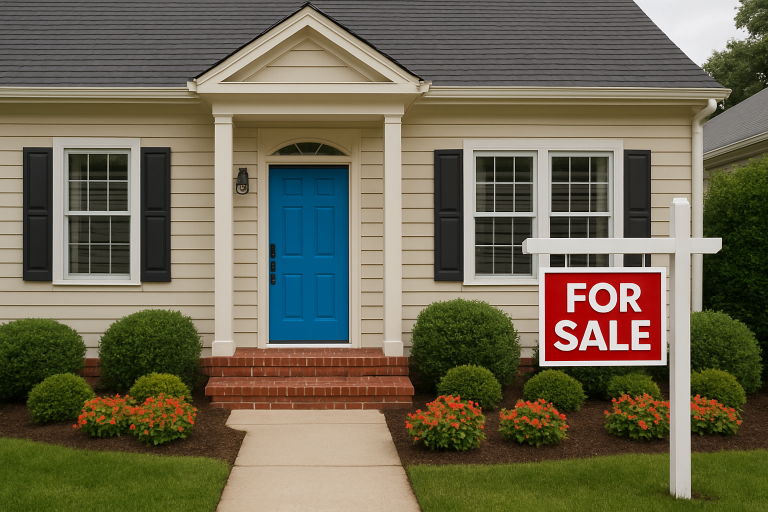Quick Sales for Any Home: Tips to Sell Your House Fast, No Matter the Condition
Why Homes Sit on the Market and How to Avoid It
Selling a home quickly involves understanding common obstacles, such as outdated interiors, necessary repairs, and pricing that doesn’t align with buyer expectations. Buyers today are well informed and often prefer move-in-ready homes or properties where they see clear value. To sell quickly, it is essential to showcase key features, be flexible with showings, and target buyers who prioritize speed, such as investors or those seeking a fast move. Considering options like a home offer from trusted buyers and working with professionals focused on fast transactions can help avoid traditional delays and close the sale on your timeline. Being proactive and responsive throughout the selling process can make a significant difference. The faster you adapt to buyer needs, the quicker your home is likely to sell.
Pricing Your Home for a Fast Sale
Setting a realistic and competitive price is crucial for achieving a fast process and rapid sales. Overpricing can turn away even the most interested buyers, while competitive pricing naturally attracts more attention and can lead to multiple offers. Start with thorough research: compare your home to similar properties in your neighborhood that have recently sold. Consider size, condition, location, and unique features to estimate the value accurately. For extra precision, consider a pre-listing appraisal. While it’s an upfront investment, it helps establish trust with buyers and provides objective support for your asking price.
Simple Upgrades that Make a Big Impact
You don’t need a major remodel to catch eyes. Small, cost-effective improvements, such as fresh paint in neutral tones, enhancing curb appeal with basic landscaping, and upgrading lighting, can significantly influence first impressions. Staging—arranging furniture and décor to showcase your home’s strengths and allow buyers to envision themselves living there—has proven ROI. According to data from the National Association of Realtors, staged homes sell 73% faster than those that are not staged. Be strategic with upgrades for the best return; focus on kitchens, bathrooms, and living spaces where buyers are most likely to notice improvements.
See also: Kitchener Waterloo Real Estate Listings Updated Market Trends and Insights
How to Market Your Home Effectively
Presentation is everything. High-quality photos and virtual tours attract more views, as most buyers start house-hunting online. Use natural light when photographing, and consider virtual staging if the property is empty. Craft a listing description that highlights both unique features and the property’s potential. Strategic use of keywords and an honest assessment build buyer trust from the moment they read your listing. Distribute your listing broadly—on popular property sites, through social media, and with targeted local marketing—to maximize exposure and connect with serious buyers.
Dealing with Unwanted or Outdated Features
If your home has outdated finishes or features, don’t panic. Transparency about the current condition, paired with suggestions for future updates, can reassure buyers. Professional photography and thoughtful staging can help minimize the impact of less desirable features. Disclose the true state of the property and highlight its positives, such as a good structure, layout, or neighborhood appeal, so buyers can see the investment potential.
When to Consider As-Is Sales
An “as-is” sale, where you sell the property in its current condition without making repairs, can save time and stress. According to Investopedia, this approach offers clear advantages, including reduced preparation, no repair costs, and a streamlined process. However, the trade-off may be a lower sale price. This method often benefits time-strapped owners, sellers of inherited properties, or those facing significant repair needs. The market for as-is homes encompasses a diverse range of buyer types, including real estate investors and individuals seeking fixer-uppers, who often target these properties. Anecdotal evidence shows that as-is homes, when properly priced and marketed, tend to sell quickly, often closing within 30 days.
Choosing the Right Buyer for a Fast Transaction
Speedy sales hinge on picking the right buyer. Cash buyers—often real estate investors—are more flexible and can close on a property without waiting for mortgage approval. Their offers might be slightly below market value, but they provide a guaranteed quick closing. Traditional buyers use mortgages and may require appraisals, inspections, and longer timelines. When navigating offers, ensure safety by vetting buyers, working with reputable agents, and never signing contracts without a complete understanding.
Next Steps: What Happens After the Sale?
Once you’ve accepted an offer, the closing process begins. Swift sales still require precise attention to paperwork, inspections, and title work. Have your documentation ready to prevent avoidable delays, and stay aware of all scheduled milestones. Efficient communication with title companies and buyers keeps everything on track. Lastly, plan your move-out logistics early to reduce stress—consider temporary housing, moving services, and transferring utilities or services as needed. Proactive planning smooths your transition to the next chapter.


